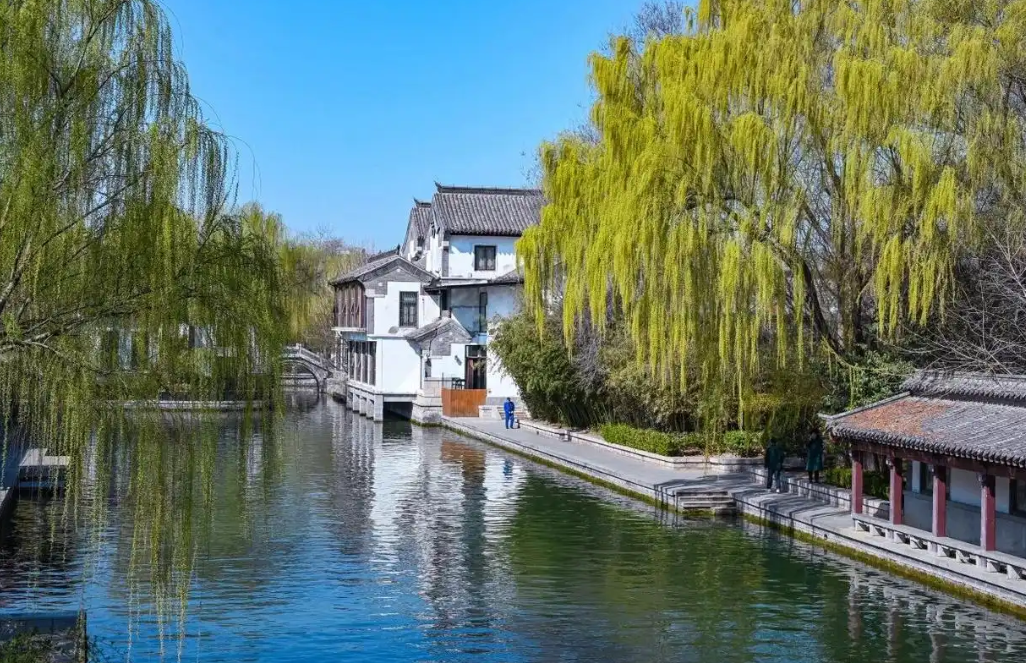全文:
(7712 KB)
HTML
输出: BibTeX | EndNote (RIS)
摘要 文化地理学者对“地方”这一理论视角主观性意义的强调,使得“地方认同”等呈现人与地方情感联系的概念被重新审视。在当今中国申遗热的背景下,当地人的地方认同在各方力量对遗产归属与表述的争夺中重塑,如果将这种重塑放在多尺度的分析框架下,就可以发现地方认同不仅仅局限于某一特定封闭的地点,在本土、全国以及跨国空间中呈现不同的表述。开平碉楼与村落作为广东首个世界文化遗产,并且是中国唯一以华侨文化为主题的世界文化遗产,是研究遗产生产对地方认同变迁影响的典型案例。结合文献分析、观察法与访谈法等,阐述遗产旅游发展背景下当地居民的地方认同变迁,分析开平作为“碉乡”的具体内涵。研究发现:遗产申报和维护使碉楼被硬性确立为地方的象征,具有高度符号化的特点;“碉乡”形象在居民地方认同中的展开并不完整;“碉乡”在历史延续中存在着多重割裂;“碉乡”的空间边界既明确又封闭。
服务
![]()
![]()
![]()
收稿日期: 2015-06-22 出版日期: 2015-12-31
基金资助:国家自然科学基金项目(41171124,D010202);开平碉楼旅游发展有限公司、江门旅游局、开平市外侨局、强亚中学同学会、开平碉楼与村落专项基金会、古宅月刊社、溯源堂、海外华侨、国内移民、游客等
引用本文:
孙九霞,周一. 遗产旅游地居民的地方认同——“碉乡”符号、记忆与空间[J]. 地理研究, 2015, 34(12): 2381-2394.
SUN Jiuxia,ZHOU Yi. Residents' place identity at heritage sites: Symbols, memories and space of the "Home of Diaolou". GEOGRAPHICAL RESEARCH, 2015, 34(12): 2381-2394.
链接本文:
或
Tab. 1 整体调研过程

Fig. 1 调研区域关系示意图

Fig. 2 自力村与古宅地区(资料来源:开平碉楼旅游发展有限公司提供)

Kaiping Diaolou and Viliages(资料来源:自力村景区管理处提供)

Taishan building(资料来源:受访对象提供)
[1] 朱竑, 钱俊希, 陈晓亮. 地方与认同: 欧美人文地理学对地方的再认识. 人文地理, 2010, 25(6): 1-6.
[1] [Zhu Hong, Qian Junxi, Chen Xiaoliang.Place and identity: The rethink of place of European-American human geography. Human Geography, 2010, 25(6):1-6.]
[2] Wright J.Terrae incognitae: The place of imagination in geography. Annals of the Association of American Geographers, 1947, 37(1): 1-15.
[3] Tuan Y F.Topophilia: A Study of Environmental Perception. Englewood Cliffs: Prentice Hall, 1974.
[4] Williams D R, Roggenbuck J W.Measuring place attachment: Some preliminary results. In: 1989 Leisure Research Symposium. Arlington: National Recreation and Park Association, 1989: 32.
[5]
Williams D R, Patterson M E. Roggenbuck J.W. Beyond the commodity metaphor: Examining emotional and symbolic attachment to place. Leisure Sciences, 1992, 14(1): 29-46.
doi: 10.1080/01490409209513155
[6]
Proshansky H M, Fabian A K, Karminoff R.Place identity: Physical world socialization of the self. Journal of Environmental Psychology, 1983, 3(1): 57-83.
doi: 10.1016/S0272-4944(83)80021-8
[7] 周尚意, 唐顺英, 戴俊骋. “地方”概念对人文地理学各分支意义的辨识. 人文地理, 2011, 26(6): 10-13.
[7] [Zhou Shangyi, Tang Shunying, Dai Juncheng.Identification of the significance of the concept of place to branches under human geography. Human Geography, 2011, 26(6): 10-13.]
[8]
Dixon J, Durrheim K.Dislocating identity: Desegregation and the transformation of place. Journal of Environmental Psychology, 2004, 24(4): 455-473.
doi: 10.1016/j.jenvp.2004.09.004
[9] 郑衡泌. 以祠神为纽带和标志的迁移人群的地方认同和融合: 以宁波沿海海神信仰为例. 亚热带资源与环境学报, 2011, 6(4): 75-84.
[9] [Zheng Hengmi.Place identity and syncretism of migration people by folk ancestor deity belief as knot and symbol: A case study of ocean spirit faith in the coast of Ningbo. Journal of Subtropical Resources and Environment, 2011, 6(4): 75-84.]
[10]
王俊, 杨雄杰, 林嘉玲. 新时代乡村婚礼的地方认同与传统重构研究: 以粤西Z乡自由恋爱婚礼中的“媒人制”为例. 云南地理环境研究, 2011, 23(6): 58-63.
doi: 10.3969/j.issn.1001-7852.2011.06.012
[10] [Wang Jun, Yang Xiongjie, Lin Jialing.Research of place identity and traditional reconstruction for current rural wedding case study of matchmaker system in freedom-love-wedding in Z village of western Guangdong province. Yunnan Geographic Environment Research, 2011, 23(6): 58-63.]
[11]
刘博, 朱竑, 袁振杰. 传统节庆在地方认同建构中的意义: 以广州“迎春花市”为例. 地理研究, 2012, 31(12): 2197-2208.
doi: 10.11821/yj2012120007
[11] [Liu Bo, Zhu Hong, Yuan Zhenjie.The significance of the traditional festival in the construction of place identity: A case study of the Winter Jasmine Flower Market in Guangzhou. Geographical Research, 2012, 31(12): 2197-2208.]
[12] 陈华文. 细节变异与地方认同:年文化的一种存在方式. 文化遗产, 2007, 1(1): 69-73.
[12] [Chen Huawen.Detail transformation and identity: A way for the existence of Spring Festival culture. Cultural Heritage, 2007, 1(1): 69-73.]
[13] 段义孚. 经验透视中的空间与地方. 台北: 台北编译馆, 1998.
[13] [Tuan Yi-fu.Space and Place in the Perspective of Experience. Taipei: Taipei Institute for Compilation and Translation, 1998.]
[14] 彭兆荣.遗产:反思与阐释. 昆明: 云南教育出版社, 2008.
[14] [Peng Zhaorong.Heritage: Reflection and Interpretation. Kunming: Yunnan Education Press, 2008.]
[15] 宋奕. “世界文化遗产”40年: 由“物”到“人”再到“整合”的轨迹. 西南民族大学学报: 人文社会科学版. 2012, 34(10): 15-21.
[15] [Song Yi.The 40 years of world cultural heritage: From "thing" to "human" to "integration". Journal of Southwest University for Nationalities: Humanities and Social Science, 2012, 34(10): 15-21.]
[16] 李函静. 世界遗产与民族地区经济发展, 昆明: 云南大学硕士学位论文, 2010.
[16] [Li Hanjing.The world heritage and economic development in national regions. Kunming: Master Dissertation of Yunnan University, 2010.]
[17] Howard P. Heritage Management, Interpretation, Identity. London: Continuum, 2006.
[18] 张朝枝. 旅游与遗产保护: 基于案例的理论研究. 天津: 南开大学出版社, 2008.
[18] [Zhang Chaozhi.Tourism and Heritage Protection, Based on the Study of the Theory of the Case. Tianjin: Nankai University Press, 2008.]
[19]
Boswell R.Heritage Tourism and identity in the mauritian villages of chamarel and Le Morne. Journal of Southern African Studies. 2005, 31(2): 283-295.
doi: 10.1080/03057070500109466
[20] Richter L K.The politics of heritage tourism development: Emerging issues in the new millennium. In: Pearce D, Bulter R. Contemporary Issues in Tourism Development. London: Routledge, 1997: 108-126.
[21] Peckham R S.Introduction: The politics of heritage and public culture. In: Peckham R S. Rethinking Heritage: Cultures and Politics in Europe. London: I. B. Tauris, 2003: 1-16.
[22]
Edensor T.National identity and the politics of memory: Remembering Bruce and Wallace in symbolic space. Environment & Planning D: Society & Space, 1997, 15(2): 175-194.
doi: 10.1068/d150175
[23]
彭兆荣.家园遗产:现代遗产学的人类学视野. 徐州工程学院学报: 社科版, 2013, 28(5): 73-78.
doi: 10.3969/j.issn.1674-3571.2013.05.013
[23] [Peng Zhaorong.Homestead heritage: The anthropological study of modern heritage. Journal of Xuzhou Institute of Technology: Social Sciences Edition, 2013, 28(5): 73-78.]
[24] Smith M K.Issues in Cultural Tourism Studies. New York: Routledge, 2003.;jsessionid=349E1A002D8491FE701CBAC89EECCE18
[25]
Evans G.Living in a world heritage city: Stakeholders in the dialectic of the universal and particular. International Journal of Heritage Studies, 2002, 8(2):117-135.
doi: 10.1080/13527250220143913
[26] Takamitsu J.The impact of world heritage site designation on local communities. Tourism Management, 2011: 288-296.
[27] 董皓, 张喜喜. 近十年国外文化遗产旅游研究动态及趋势: 基于《Annals of Tourism Research》与《Tourism Management》相关文章的述评. 人文地理, 2012, 27(5): 157-160.
[27] [Dong Hao, Zhang Xixi .Research trends of cultural heritage tourism abroad in the last decade: A review of Annals of Tourism Research and Tourism Management. Human Geography , 2012, 27(5): 157-160.]
[28] 张国雄. 五邑文化源流. 广州: 广东高等教育出版社, 1998.
[28] [Zhang Guoxiong.The origin of Wuyi culture. Guangzhou: Guangdong Higher Education Press, 1998.]
[29]
卢帆. 炫耀性消费: 基于侨乡文化的分析. 经济与社会发展, 2008, 6(2): 117-119.
doi: 10.3969/j.issn.1672-2728.2008.02.033
[29] [Lu Fan.Based on the analysis of the overseas Chinese hometown culture. Conspicuous Consumption: Economic and Social Development, 2008, 6(2): 117-119.]
[30] Jing J.The Temple of Memories: History, Power, and Morality in a Chinese Village. Stanford: Stanford University Press, 1996.
[31] 蔡晓梅, 朱竑, 刘晨. 情境主题餐厅员工地方感特征及其形成原因: 以广州味道云南食府为例. 地理学报, 2012, 67(2): 239-252.
[31] [Cai Xiaomei, Zhu Hong, Liu Chen.Characteristics and causes of situational theme restaurant staff's sense of place: A case study of the taste-Yunnan restaurant in Guangzhou. Acta Geographica Sinica, 2012, 67(2): 239-252.]
[32] 杨昀, 保继刚.旅游社区外来经营者地方依恋的特征分析: 以阳朔西街为例. 人文地理. 2012, 27(6): 81-86.
[32] [Yang Yun, Bao Jigang.The characteristics of non-local owners' place attachment in tourism community: A case study of west Yangshuo street. Human Geography, 2012, 27(6): 81-86.]
[1] 宗会明,周素红,闫小培. 全球化下地方综合服务型物流企业的空间网络组织——以腾邦物流为案例[J]. 地理研究, 2015, 34(5): 944-952.
[2] 陈霄. 宁波老外滩酒吧街的不得其所与地方建构[J]. 地理研究, 2014, 33(7): 1217-1229.
[3] 汪芳,李薇,PROMINSKI Martin. 城镇化和地方性的新冲突、新策略与新探索——中德双边研讨会会议综述[J]. 地理研究, 2014, 33(11): 2205-2214.
[4] 刘云刚, 燕婷婷. 地方城市的人口回流与移民战略——基于深圳-驻马店的调查研究[J]. 地理研究, 2013, 32(7): 1280-1290.
[5] 肖潇, 张捷, 卢俊宇, 尹立杰. 基于ITCM的旅游者地方依恋价值评估——以九寨沟风景区为例[J]. 地理研究, 2013, 32(3): 570-579.
[6] 曾国军, 刘梅, 刘博, 蔡晓梅. 跨地方饮食文化生产的过程研究──基于符号化的原真性视角[J]. 地理研究, 2013, 32(12): 2366-2376.
[7] 尹贻梅, 刘志高, 刘卫东. 路径依赖理论及其地方经济发展隐喻[J]. 地理研究, 2012, 31(5): 782-791.
[8] 刘博, 朱竑, 袁振杰. 传统节庆在地方认同建构中的意义——以广州“迎春花市”为例[J]. 地理研究, 2012, 31(12): 2197-2208.
[9] 郑衡泌. 民间祠神视角下的地方认同形成和结构——以宁波广德湖区为例[J]. 地理研究, 2012, 31(12): 2209-2219.
[10] 尹立杰, 张捷, 韩国圣, 钟士恩, 李倩. 基于地方感视角的乡村居民旅游影响感知研究——以安徽省天堂寨为例[J]. 地理研究, 2012, 31(10): 1916-1926.
[11] 周尚意, 杨鸿雁, 孔翔. 地方性形成机制的结构主义与人文主义分析——以798和M50两个艺术区在城市地方性塑造中的作用为例[J]. 地理研究, 2011, 30(9): 1566-1576.
[12] 艾少伟, 苗长虹. 异质性"通道"与跨国公司地方化结网——以苏州工业园为例[J]. 地理研究, 2011, 30(8): 1483-1498.
[13] 李志刚, 薛德升, 杜 枫, 朱 颖. 全球化下"跨国移民社会空间"的地方响应——以广州小北黑人区为例[J]. 地理研究, 2009, 28(4): 920-932.
[14] 张 纯, 王敬甯, 陈 平, 王缉慈, 吕 斌. 地方创意环境和实体空间对城市文化创意活动的影响——以北京市南锣鼓巷为例[J]. 地理研究, 2008, 27(2): 439-448.
[15] 苗长虹, 魏也华. 西方经济地理学理论建构的发展与论争[J]. 地理研究, 2007, 26(6): 1233-1246.







